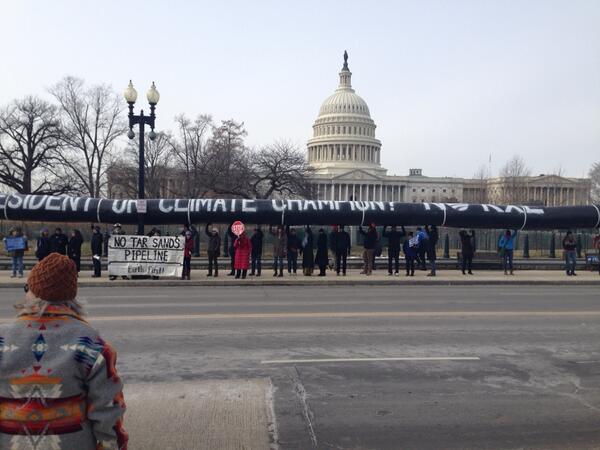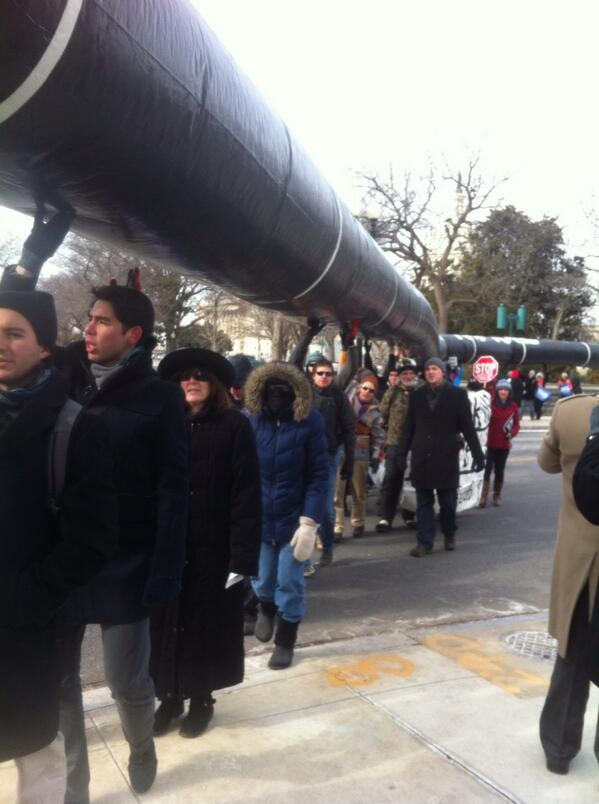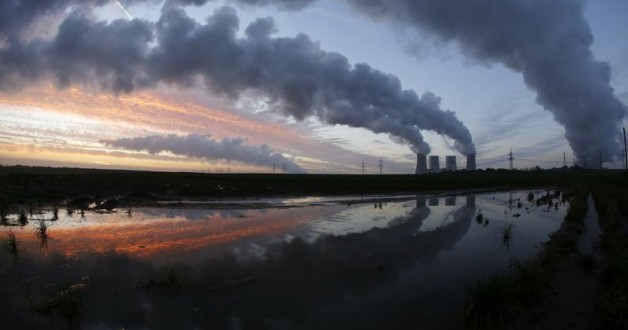by Peter Moskowitz @PeterMoskowitz January 29, 2014 1:42AM ET
Environmental groups say Obama missed an opportunity to lay out a new climate change action plan
Barack Obama speaks in 2012 at Sempra U.S. Gas & Power’s Copper Mountain Solar 1 facility in Nevada, the largest photovoltaic solar plant in the United States.Ethan Miller/Getty Images
While President Barack Obama has delivered the strongest rhetoric of any sitting president on the urgent need for action on climate change, his actual environmental record is mixed. So when Obama delivered his State of the Union speech on Tuesday night, environmental groups waited eagerly for clues about what may lie ahead for energy and the environment in the president’s last years in office.
But, according to many environmental leaders, Tuesday’s speech didn’t clear up much. Obama mentioned climate change and forcefully called for energy independence, but much of the environmental section of his speech was dedicated his “all-of-the-above” strategy, which includes big increases to one of the most controversial sources of alternative energy, natural gas.
Perhaps more telling of the Obama administration’s future energy policy is what he didn’t say. Out of the nearly 7,000 words contained in the president’s prepared speech, climate and energy accounted for under 500. And unlike in previous State of the Union speeches, the president’s talking points left out specifics about programs that could combat climate change. “He reiterated the things he was already planning to do,” said Shelley Welton, the deputy director of the Center for Climate Change Law at Columbia University. “But I didn’t see anything new.”
Leaders of some environmental groups say they’re most disappointed that the environmental section of Obama’s speech was largely dedicated to drilling for natural gas. Green groups say the process, often called fracking, pollutes air and land, and can have adverse health consequencesfor those who live near drilling sites.
But Obama seemed unwavering in his commitment to increase investment and streamline regulation for natural gas.
“If extracted safely, it’s the bridge fuel that can power our economy with less of the carbon pollution,” he said. “Businesses plan to invest almost $100 billion in new factories that use natural gas. I’ll cut red tape to help states get those factories built.”
That left some environmentalists disappointed. “You can’t have regulations on carbon pollution and then advocate for an ‘all-the-above’ carbon policy that includes natural gas,” said Eric Pica, president of Friends of the Earth. “The rhetoric of the speech didn’t live up to the seriousness of the issue.”
Others were more disappointed with what Obama seemed to leave out. In past State of the Union speeches, Obama outlined specific energy goals and policy initiatives. Last June, Obama gave a speech in which he directed the Environmental Protection Agency to make sweeping changes to how it regulates the building of new power plants. The changes would severely limit the amount of carbon dioxide a new plant can produce, making it much harder to construct new coal plants in particular. This coming June, the Environmental Protection Agency will also release new regulations for existing power plants.
Obama did mentioned solar energy in this year’s speech, but he didn’t say specifically how his administration would support the development of the solar industry. “We want to see some real leadership, but instead we saw the president fully embrace fracking and really put forward no new programs,”said Jamie Henn, co-founder of 350.org. “The rhetoric on climate change was good, but the actual policy wasn’t there.” With no specifics outlined in the State of the Union, many environmental groups have been left pondering what comes next for the president and the environment.
Obama has a slew of decisions to make before 2016 that will impact the environment. Perhaps most controversial are the pending application for TransCanada’s Keystone XL pipeline, which would deliver hundreds of thousands of gallons of highly polluting bitumen sands from Canada to the United States daily, and the Trans-Pacific Partnership, an international trade agreement currently being negotiated without public input, which environmentalists say could incentivize more fossil fuel energy.
Those didn’t get a mention in the State of the Union speech, but some leaders of environmental groups were just happy Obama mentioned energy and climate issues at all. That, they say, is a big step forward from previous presidents.
“It’s so important that the president recognize the climate challenge, and the president really does have a good record on climate change action,” said Abigail Dillen, the vice president of litigation at EarthJustice, a public interest law organization.
But most seemed to feel that Obama missed an opportunity to say more on the environment and push harder for curbing climate change. “If you want to bend history in one direction, you need to pick a side and put your all into it,” Greenpeace’s executive director Phil Radford said in a statement. “Unfortunately, the president continues to stand right in the middle.”
Special thanks to Richard Charter



